ADDICKS AND BARKER RESERVOIRS ARE NOW COMPLETELY EMPTY AND READY FOR THE NEXT FLOOD 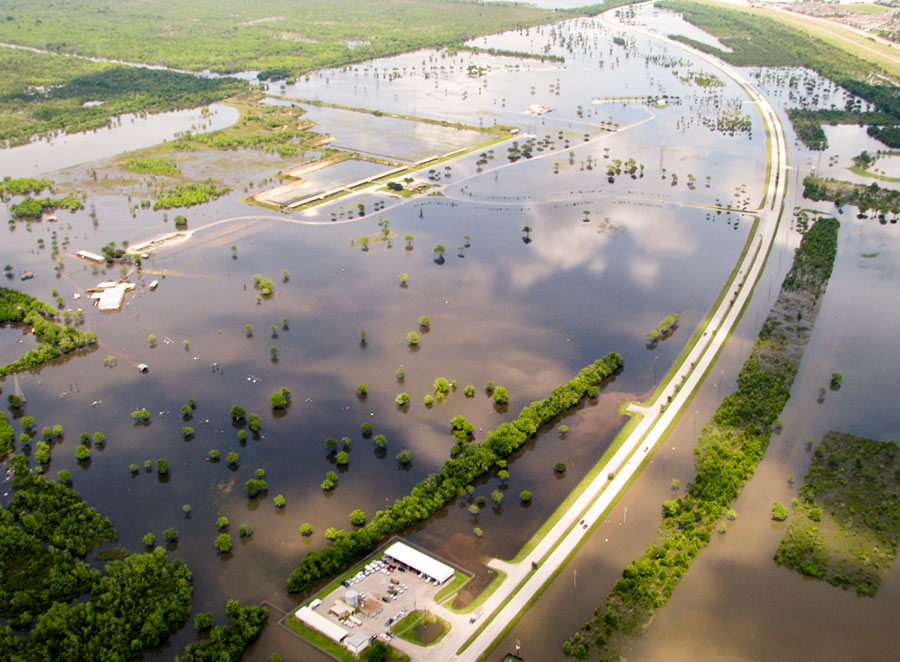 All water stuck behind the Addicks and Barker dams has now been released, the Army Corps of Engineers announced late yesterday. That means that for the first time since Hurricane Harvey-triggered rains began filling the 24,520-acre reservoirs, they are now dry and available for use again as parkland. The last bits of water actually left the Addicks and Barker reservoirs last Thursday, October 12th, and Friday the 13th respectively; the announcement was delayed, a public-affairs officer tells reporter Amelia Brust, in order to “receive legal guidance.” The Corps, writes Brust, “is now a defendant in multiple lawsuits brought by surrounding property owners who say their homes and businesses were flooded as a result of the dams’ releases.” [Community Impact] Photo of American Shooting Centers and Millie Bush Dog Park off Westheimer Pkwy. in Barker Reservoir, flooded after Memorial Day, 2015: U.S. Army Corps of Engineers [license]
All water stuck behind the Addicks and Barker dams has now been released, the Army Corps of Engineers announced late yesterday. That means that for the first time since Hurricane Harvey-triggered rains began filling the 24,520-acre reservoirs, they are now dry and available for use again as parkland. The last bits of water actually left the Addicks and Barker reservoirs last Thursday, October 12th, and Friday the 13th respectively; the announcement was delayed, a public-affairs officer tells reporter Amelia Brust, in order to “receive legal guidance.” The Corps, writes Brust, “is now a defendant in multiple lawsuits brought by surrounding property owners who say their homes and businesses were flooded as a result of the dams’ releases.” [Community Impact] Photo of American Shooting Centers and Millie Bush Dog Park off Westheimer Pkwy. in Barker Reservoir, flooded after Memorial Day, 2015: U.S. Army Corps of Engineers [license]
Tag: Hurricane Harvey
SURVEYING THE SOGGY AFTERMATH OF HOUSTON’S ULTIMATE HOME-TOUR TEST 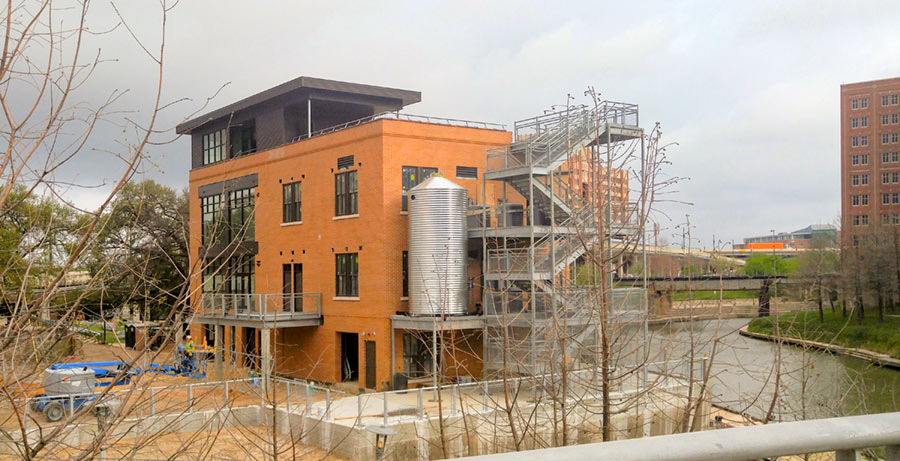 Talk about timing: The Rice Design Alliance’s annual home tour this past March opened to inspection 6 structures built in Houston floodplains with some sort of strategy to make it through a major water event. How’d these properties survive the cataclysm that followed only 5 months later? A 1965 Meyerland home on the tour by Houston architects Brooks and Brooks one block north of Brays Bayou was damaged, Jack Murphy reports. And his follow-up story on the RDA’s H2Ouston tour includes no word on the Harvey experiences of François de Menil’s 5-story Temple Terrace townhome or the 3-story butterfly-roof home on Logan Ln. backing up to Buffalo Bayou Taft Architects built in 1996. But 2 more recently built homes on the tour — 2-story structures by architects Brett Zamore in Linkwood and Nonya Grenader in Shirkmere survived without much more than messes in their garages (and a flooded-out car), according to Murphy. Then there’s the Sunset Coffee Building fronting Buffalo Bayou Downtown, which serves as the offices of the Buffalo Bayou Partnership, and which in its recent redo by Lake Flato and BNIM (pictured), was designed to take on water: “All sources indicate that the design performed as anticipated. . . . The staff moved exhibit materials to the second floor and secured the elevator on an upper floor. But there are always issues. The grease trap filled with water, thermostats need to be replaced, and the elevator shaft had five feet of standing water at the bottom, causing electrical issues. Security cameras mounted on the building filled with water and malfunctioned. The fire alarm went off for four days, making the area sound like a war zone, even catching the attention of a CNN reporter. Still, water didn’t crest into the offices on the second floor. (It was almost this high during Allison.) Shortly after the waters receded, the building was habitable again.” But this sort of resilience wasn’t just added to the building by its renovators: “The BBP’s Rebecca Leija and Anne Olson told me their insurance adjuster said the Sunset Building, built in 1910, was well-suited to handle floods due to its height and angle relative to the bayou. Sure enough, in plan the building is set at an angle to the bayou’s flow, presenting a corner to floodwaters rather than a flat face. And, its east façade breaks slightly, perhaps to further reduce the surface area ‘seen’ by floodwaters and therefore reduce their force on the walls and foundation.” [OffCite] Photo of Sunset Coffee Building renovation: Adam Williams
Talk about timing: The Rice Design Alliance’s annual home tour this past March opened to inspection 6 structures built in Houston floodplains with some sort of strategy to make it through a major water event. How’d these properties survive the cataclysm that followed only 5 months later? A 1965 Meyerland home on the tour by Houston architects Brooks and Brooks one block north of Brays Bayou was damaged, Jack Murphy reports. And his follow-up story on the RDA’s H2Ouston tour includes no word on the Harvey experiences of François de Menil’s 5-story Temple Terrace townhome or the 3-story butterfly-roof home on Logan Ln. backing up to Buffalo Bayou Taft Architects built in 1996. But 2 more recently built homes on the tour — 2-story structures by architects Brett Zamore in Linkwood and Nonya Grenader in Shirkmere survived without much more than messes in their garages (and a flooded-out car), according to Murphy. Then there’s the Sunset Coffee Building fronting Buffalo Bayou Downtown, which serves as the offices of the Buffalo Bayou Partnership, and which in its recent redo by Lake Flato and BNIM (pictured), was designed to take on water: “All sources indicate that the design performed as anticipated. . . . The staff moved exhibit materials to the second floor and secured the elevator on an upper floor. But there are always issues. The grease trap filled with water, thermostats need to be replaced, and the elevator shaft had five feet of standing water at the bottom, causing electrical issues. Security cameras mounted on the building filled with water and malfunctioned. The fire alarm went off for four days, making the area sound like a war zone, even catching the attention of a CNN reporter. Still, water didn’t crest into the offices on the second floor. (It was almost this high during Allison.) Shortly after the waters receded, the building was habitable again.” But this sort of resilience wasn’t just added to the building by its renovators: “The BBP’s Rebecca Leija and Anne Olson told me their insurance adjuster said the Sunset Building, built in 1910, was well-suited to handle floods due to its height and angle relative to the bayou. Sure enough, in plan the building is set at an angle to the bayou’s flow, presenting a corner to floodwaters rather than a flat face. And, its east façade breaks slightly, perhaps to further reduce the surface area ‘seen’ by floodwaters and therefore reduce their force on the walls and foundation.” [OffCite] Photo of Sunset Coffee Building renovation: Adam Williams
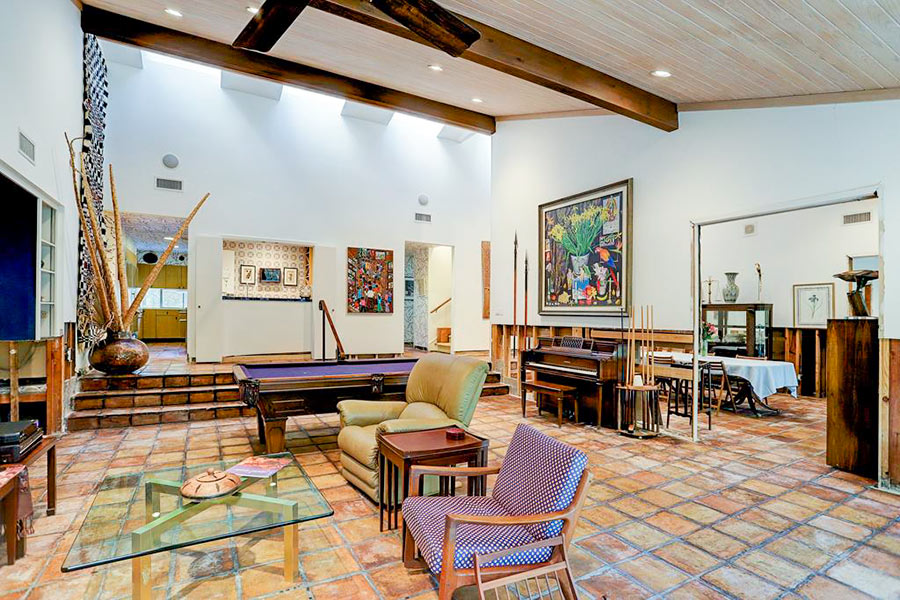
- 307 Fall River Ct. [HAR]
WHAT MAKES WEST HOUSTON THE BERMUDA TRIANGLE OF REAL ESTATE DISCLOSURE 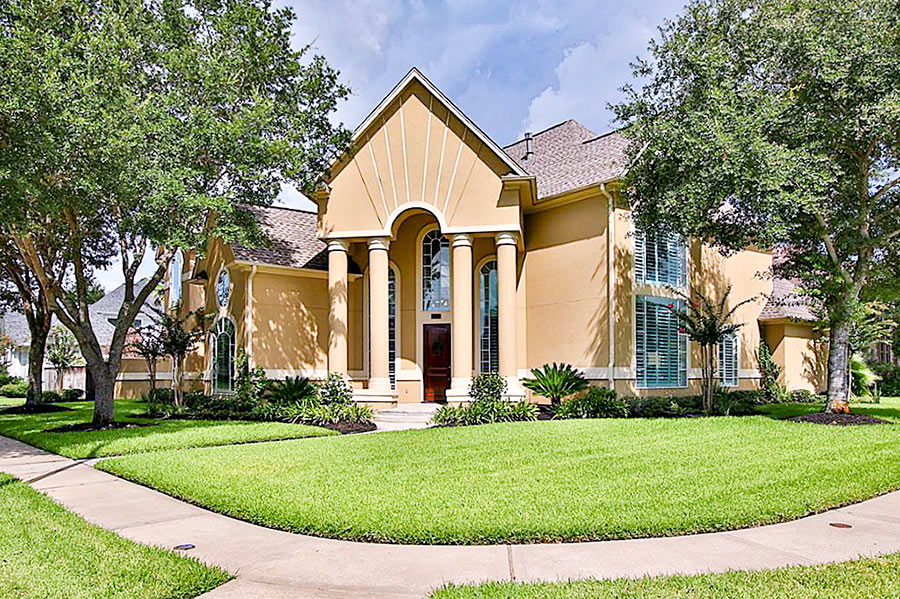 “None of the more than half a dozen residents interviewed by The Texas Tribune and ProPublica after the floods said they knew they were living inside Addicks or Barker — many of their neighborhoods are several miles away from the dams. Several local officials — including Houston’s ‘flood czar’ and a neighboring county executive — said they had no idea the neighborhoods had been built inside the flood pools. Several real estate agents said they didn’t realize they were selling homes inside the pools.” This from the latest exposé on how 14,000 homes came to be located in designed-to-flood areas inside the Addicks and Barker reservoirs. First, the good news: Of those 14,000 homes, only 5,138 of them flooded this time! Among the many additional OMG-worthy revelations from this latest report from the crack Houston-flooding investigations team of Neena Satija, Kiah Collier, and Al Shaw: Of those homes built inside the reservoirs, at least 4,000 of them were built after Tropical Storm Allison hit in 2001. That’s interesting to note, considering that a Harris County Flood Control District report published in 2003 warned that as many as 2,000 acres of private land inside the reservoirs might easily have flooded in that storm if the rains had fallen in a slightly different location. Also included: this little glance at the area’s real-estate future: “One five-bedroom home in Lakes on Eldridge . . . was listed for $678,000 about two weeks before it flooded during Harvey. The seller’s agent, Moira Holden, tried to put a positive spin on things when she updated the online listing that decreased the asking price by $10,000. ‘Unfortunately this stunning home did flood and is being refurbished to the highest spec!’ it says. ‘Fabulous chance to choose your finishes!‘ When asked if she would disclose to potential buyers that the home was inside Addicks Reservoir, Holden didn’t have a clear answer. ‘I will obviously disclose whatever we are required to disclose,’ she said, pointing out that the home wasn’t in a floodplain. ‘I would hope that the buyer’s Realtor would do their due diligence on that.'” [Texas Tribune; previously on Swamplot] Photo of 13119 Shermons Pond, for sale in Lakes on Eldridge: HAR
“None of the more than half a dozen residents interviewed by The Texas Tribune and ProPublica after the floods said they knew they were living inside Addicks or Barker — many of their neighborhoods are several miles away from the dams. Several local officials — including Houston’s ‘flood czar’ and a neighboring county executive — said they had no idea the neighborhoods had been built inside the flood pools. Several real estate agents said they didn’t realize they were selling homes inside the pools.” This from the latest exposé on how 14,000 homes came to be located in designed-to-flood areas inside the Addicks and Barker reservoirs. First, the good news: Of those 14,000 homes, only 5,138 of them flooded this time! Among the many additional OMG-worthy revelations from this latest report from the crack Houston-flooding investigations team of Neena Satija, Kiah Collier, and Al Shaw: Of those homes built inside the reservoirs, at least 4,000 of them were built after Tropical Storm Allison hit in 2001. That’s interesting to note, considering that a Harris County Flood Control District report published in 2003 warned that as many as 2,000 acres of private land inside the reservoirs might easily have flooded in that storm if the rains had fallen in a slightly different location. Also included: this little glance at the area’s real-estate future: “One five-bedroom home in Lakes on Eldridge . . . was listed for $678,000 about two weeks before it flooded during Harvey. The seller’s agent, Moira Holden, tried to put a positive spin on things when she updated the online listing that decreased the asking price by $10,000. ‘Unfortunately this stunning home did flood and is being refurbished to the highest spec!’ it says. ‘Fabulous chance to choose your finishes!‘ When asked if she would disclose to potential buyers that the home was inside Addicks Reservoir, Holden didn’t have a clear answer. ‘I will obviously disclose whatever we are required to disclose,’ she said, pointing out that the home wasn’t in a floodplain. ‘I would hope that the buyer’s Realtor would do their due diligence on that.'” [Texas Tribune; previously on Swamplot] Photo of 13119 Shermons Pond, for sale in Lakes on Eldridge: HAR
HOUSING AUTHORITY: OUR FLOODED CLAYTON HOMES DEVELOPMENT WAS GOING TO BE DEMOLISHED ANYWAY 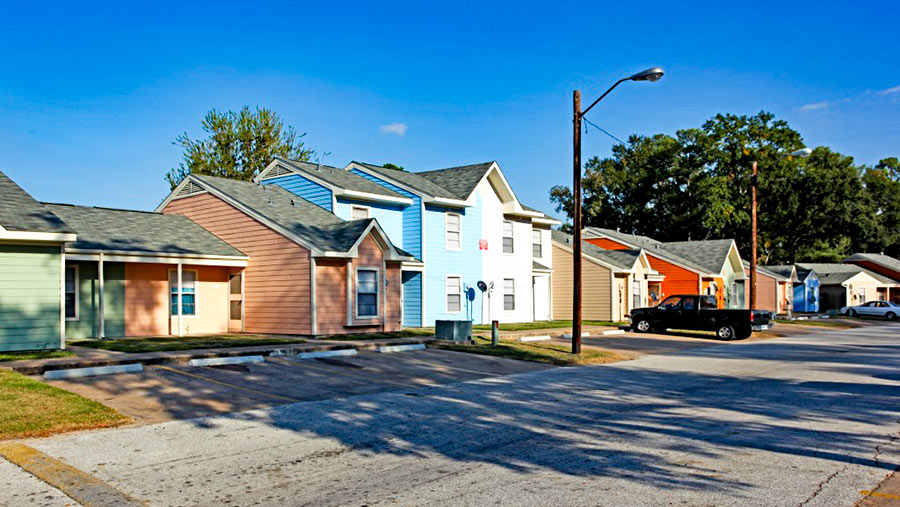 A new statement from the Houston Housing Authority provides a little more background on its decision to demolish 112 of the 296 units at the authority’s Clayton Homes low-income housing neighborhood just east of Hwy 59 at the northern tip of EaDo. The homes were deemed “uninhabitable” after flooding from Hurricane Harvey triggered mold and other health concerns: “HHA decided demolition was the best course of action for the damaged units since the entire property is located on land acquired by eminent domain and will face eventual demolition for TxDOT’s I-45 freeway extension. When the remainder of Clayton units are demolished in a few years, the remaining residents will either be relocated to another public housing unit or receive HCVs.” Housing Choice (formerly Section 8) Vouchers — along with moving assistance and payments — are also being provided to residents of 82 out of the 100 units at another Housing Authority development, Forest Green Townhomes at 8945 Forest Hollow St. in northeast Houston, which the authority today announced had also been rendered unlivable by the storm. [Houston Housing Authority; previously on Swamplot] Photo of pre-Harvey Forest Green Townhomes: Forest Green
A new statement from the Houston Housing Authority provides a little more background on its decision to demolish 112 of the 296 units at the authority’s Clayton Homes low-income housing neighborhood just east of Hwy 59 at the northern tip of EaDo. The homes were deemed “uninhabitable” after flooding from Hurricane Harvey triggered mold and other health concerns: “HHA decided demolition was the best course of action for the damaged units since the entire property is located on land acquired by eminent domain and will face eventual demolition for TxDOT’s I-45 freeway extension. When the remainder of Clayton units are demolished in a few years, the remaining residents will either be relocated to another public housing unit or receive HCVs.” Housing Choice (formerly Section 8) Vouchers — along with moving assistance and payments — are also being provided to residents of 82 out of the 100 units at another Housing Authority development, Forest Green Townhomes at 8945 Forest Hollow St. in northeast Houston, which the authority today announced had also been rendered unlivable by the storm. [Houston Housing Authority; previously on Swamplot] Photo of pre-Harvey Forest Green Townhomes: Forest Green
HERE COME THE HARVEY LOW BALLERS 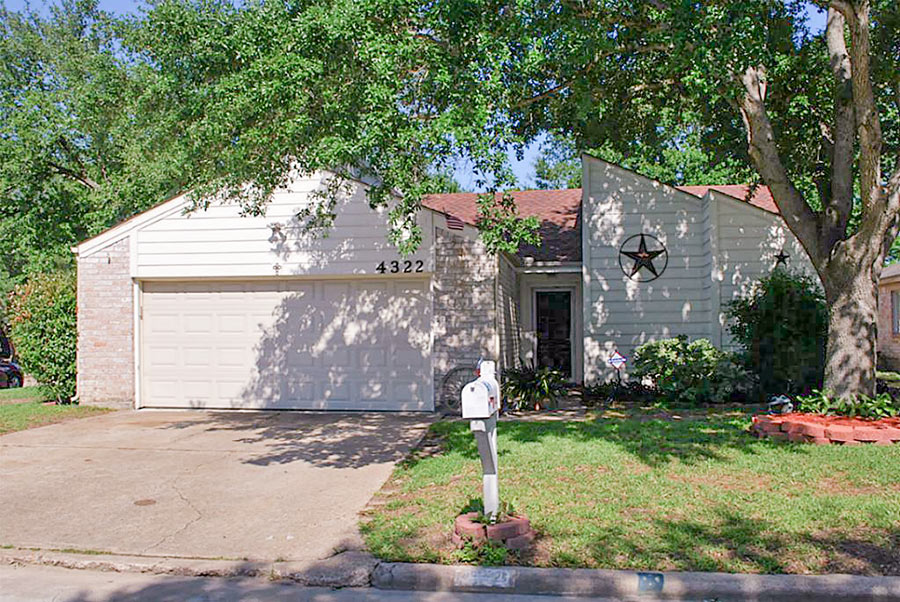 Outsiders moving into town to buy up homes from distressed owners for pennies on the dollar in the wake of local catastrophe is a proud and longstanding Houston tradition: It keeps the city’s reputation for real-estate shenanigans intact, even as oldtimers mellow. It’s how Sir Allen Stanford got his illustrious start! Plus: Investments that must be recouped can help keep zombie neighborhoods that maybe-shouldn’t-have-been-built-there-or-that-way-in-the-first-place alive. But you don’t have to be a wet-carpetbagger to get in on the fun: Reporter Prashant Gopal heads to the Redneck Country Club on Airport Blvd. in Stafford for a well-attended pep talk by local trashed-home recycler Eddie Gant, then follows local real-estate agent Bryan Schild as he drives through neighborhoods looking for deals: “One of Schild’s prospects is Joseph Hernandez, a disabled U.S. Army veteran married to a housekeeper. The couple are living in a hotel and saving money by eating only two meals a day. Schild has made them a painful offer. If they walk away from their two-bedroom house, worth $127,000 before Hurricane Harvey, Schild will pick up the mortgage payments, paying nothing else. Although he says he sympathizes with the Hernandezes’ plight, he thinks the offer is fair because he figures the home is now worth less than its $65,000 mortgage. Hernandez is in a bind. He didn’t buy flood insurance because his house wasn’t in a high-risk area. He can’t afford to rebuild, and he’s been told he’s eligible for only $23,000 in federal assistance. If he turns over the deed, he’s looking at losing the entire $60,000 in equity he had before the flood. ‘It’s blurry, what’s coming,’ he says. ‘We’ll probably have to sell to an investor, and that’s not good. We were forced out.’†[Bloomberg BusinessWeek] Photo of Hernandez’s home in Bear Creek Village, before it flooded: HAR
Outsiders moving into town to buy up homes from distressed owners for pennies on the dollar in the wake of local catastrophe is a proud and longstanding Houston tradition: It keeps the city’s reputation for real-estate shenanigans intact, even as oldtimers mellow. It’s how Sir Allen Stanford got his illustrious start! Plus: Investments that must be recouped can help keep zombie neighborhoods that maybe-shouldn’t-have-been-built-there-or-that-way-in-the-first-place alive. But you don’t have to be a wet-carpetbagger to get in on the fun: Reporter Prashant Gopal heads to the Redneck Country Club on Airport Blvd. in Stafford for a well-attended pep talk by local trashed-home recycler Eddie Gant, then follows local real-estate agent Bryan Schild as he drives through neighborhoods looking for deals: “One of Schild’s prospects is Joseph Hernandez, a disabled U.S. Army veteran married to a housekeeper. The couple are living in a hotel and saving money by eating only two meals a day. Schild has made them a painful offer. If they walk away from their two-bedroom house, worth $127,000 before Hurricane Harvey, Schild will pick up the mortgage payments, paying nothing else. Although he says he sympathizes with the Hernandezes’ plight, he thinks the offer is fair because he figures the home is now worth less than its $65,000 mortgage. Hernandez is in a bind. He didn’t buy flood insurance because his house wasn’t in a high-risk area. He can’t afford to rebuild, and he’s been told he’s eligible for only $23,000 in federal assistance. If he turns over the deed, he’s looking at losing the entire $60,000 in equity he had before the flood. ‘It’s blurry, what’s coming,’ he says. ‘We’ll probably have to sell to an investor, and that’s not good. We were forced out.’†[Bloomberg BusinessWeek] Photo of Hernandez’s home in Bear Creek Village, before it flooded: HAR
HOUSING AUTHORITY READY TO DEMOLISH MORE THAN A THIRD OF CLAYTON HOMES AFTER HARVEY FLOODING 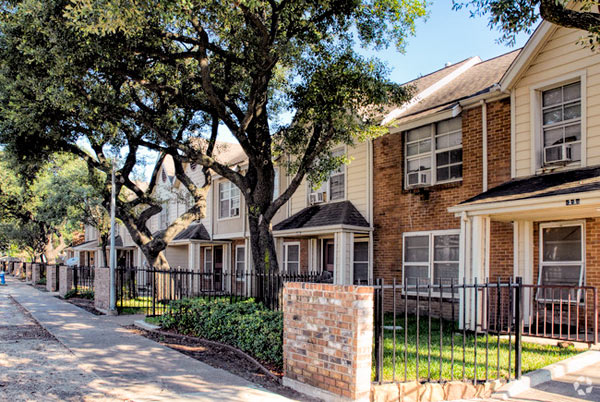 112 of the 296 apartments at Clayton Homes have been deemed “uninhabitable” by its owner, the Houston Housing Authority, which is now seeking to demolish them. The affordable-housing complex tucked between Hwy. 59 and Buffalo Bayou north of Runnels St. in the northwest corner of the East End was flooded after Hurricane Harvey; subsequent investigations conducted by local researchers led by the New York Times and by the authority found numerous health and safety problems in the residences, including festering mold and high levels of E. coli. Submitting a demolition request for those units allowed the authority to receive and distribute “tenant protection vouchers” that will allow their residents to relocate to any voucher-accepting unit in the city, a spokesperson for the agency says: “Since Hurricane Harvey caused extensive damage to many of HHA’s public housing properties, housing options within HHA’s public housing program are now exhausted, which is why residents are receiving vouchers.” The agency says it is also helping Clayton Homes residents not eligible for the vouchers as well to find new homes — with relocation assistance services and one-time payments — and that it is refunding rents collected for periods when homes in the complex were uninhabitable. Photo: Apartments.com
112 of the 296 apartments at Clayton Homes have been deemed “uninhabitable” by its owner, the Houston Housing Authority, which is now seeking to demolish them. The affordable-housing complex tucked between Hwy. 59 and Buffalo Bayou north of Runnels St. in the northwest corner of the East End was flooded after Hurricane Harvey; subsequent investigations conducted by local researchers led by the New York Times and by the authority found numerous health and safety problems in the residences, including festering mold and high levels of E. coli. Submitting a demolition request for those units allowed the authority to receive and distribute “tenant protection vouchers” that will allow their residents to relocate to any voucher-accepting unit in the city, a spokesperson for the agency says: “Since Hurricane Harvey caused extensive damage to many of HHA’s public housing properties, housing options within HHA’s public housing program are now exhausted, which is why residents are receiving vouchers.” The agency says it is also helping Clayton Homes residents not eligible for the vouchers as well to find new homes — with relocation assistance services and one-time payments — and that it is refunding rents collected for periods when homes in the complex were uninhabitable. Photo: Apartments.com
Here’s a commandeerable after-and-before flooding shot, taken from a drone hovering 300 ft. above Hwy. 6 just north of the Barker Reservoir spillway. Move the slider at the bottom of the image to toggle slowly between the 2 views, taken Thursday, August 24th (on the right, not long before the arrival of Hurricane Harvey) and Tuesday, August 29th (on the left, after stormwater filled the reservoir and the flooded the area). You can also rotate and zoom the image with your pointing device or finger.
In the initial view, the camera is facing straight down Addicks-Howell Rd.; the wider Hwy. 6 appears to veer off to the left. Addicks-Howell marks the entrance to Fleetwood, the adjacent neighborhood. Rotate the view 180 degrees to see the spillway.
Houston visualization firm Reality Imaging & Mapping Technologies took the panoramic images and stitched them together to create the immersive and zoomable view, which can also be experienced as a VR image. Click here to view the image in its own browser window.
Image: Reality Imaging & Mapping Technologies
ALLEY THEATRE FLOODING DRAMA CAME FROM AN ALLEY THIS TIME, NOT THE TUNNEL 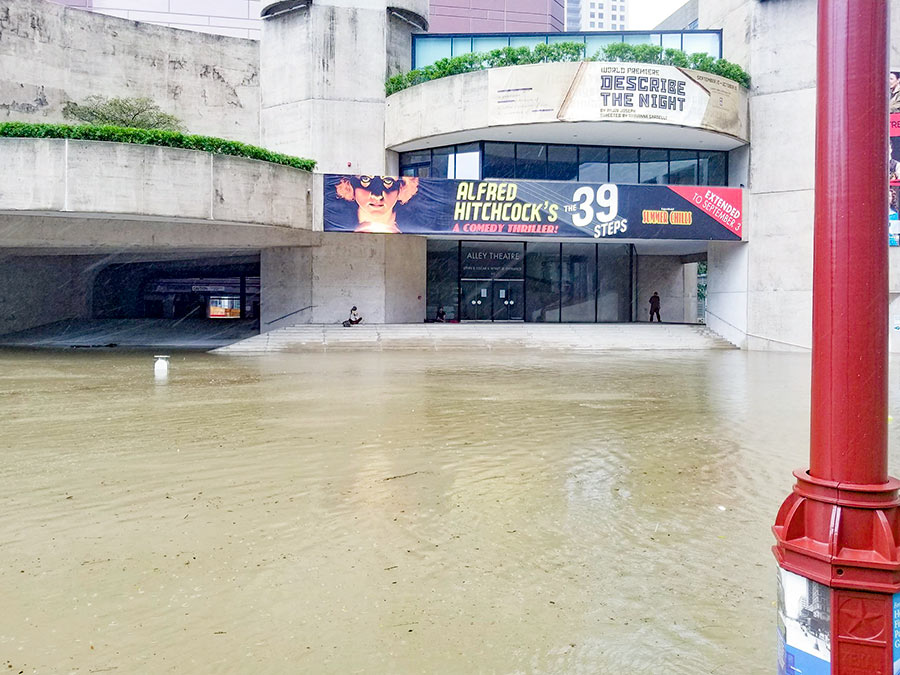 Harvey flooding caused an estimated $15 million of damage to the Alley Theatre’s basement-level stage, lobby, and dressing rooms, but for the most part spared its recently renovated box-office entrance, main stage, and upper-level lobbies. The good news, relayed by theater managing director Dean Gladden in an email to members: Submarine doors in the tunnel prevented water flowing from the Theater District’s underground parking garage from entering the theater as it had during Tropical Storm Allison. But this time there was another way in: a fresh-air intake vent in the Alley’s drive-thru Alleyway driveway fronting Jones Plaza on Texas Ave. (pictured at left in the above photo): “Harvey’s waters crested so high that this in-take vent provided an opening that enabled the flood waters to enter the building unimpeded. The water was so powerful it knocked through a cement block wall and blew open locked doors. When the cement block wall collapsed, it broke a 2-foot fire line that started spewing water out at 150 gallons a minute. About 900,000 gallons of water would come from this source before it was turned off. The flood water from the bayou would account for 2.8 million gallons of water. The water would reach 10-feet high in the Neuhaus Theatre and lobby and 15-feet high in the basement level. The Alley Theatre below ground was completely flooded.” [Alley Theatre] Photo: Jason Hrncir
Harvey flooding caused an estimated $15 million of damage to the Alley Theatre’s basement-level stage, lobby, and dressing rooms, but for the most part spared its recently renovated box-office entrance, main stage, and upper-level lobbies. The good news, relayed by theater managing director Dean Gladden in an email to members: Submarine doors in the tunnel prevented water flowing from the Theater District’s underground parking garage from entering the theater as it had during Tropical Storm Allison. But this time there was another way in: a fresh-air intake vent in the Alley’s drive-thru Alleyway driveway fronting Jones Plaza on Texas Ave. (pictured at left in the above photo): “Harvey’s waters crested so high that this in-take vent provided an opening that enabled the flood waters to enter the building unimpeded. The water was so powerful it knocked through a cement block wall and blew open locked doors. When the cement block wall collapsed, it broke a 2-foot fire line that started spewing water out at 150 gallons a minute. About 900,000 gallons of water would come from this source before it was turned off. The flood water from the bayou would account for 2.8 million gallons of water. The water would reach 10-feet high in the Neuhaus Theatre and lobby and 15-feet high in the basement level. The Alley Theatre below ground was completely flooded.” [Alley Theatre] Photo: Jason Hrncir
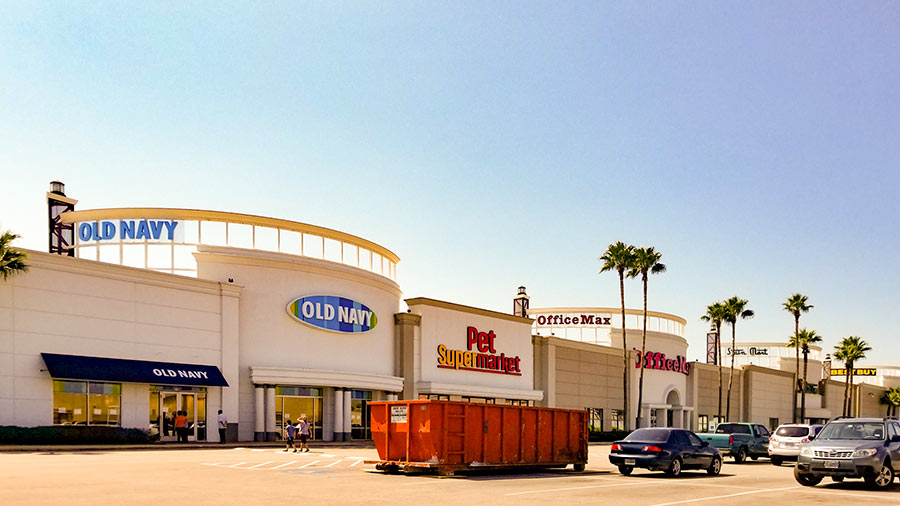
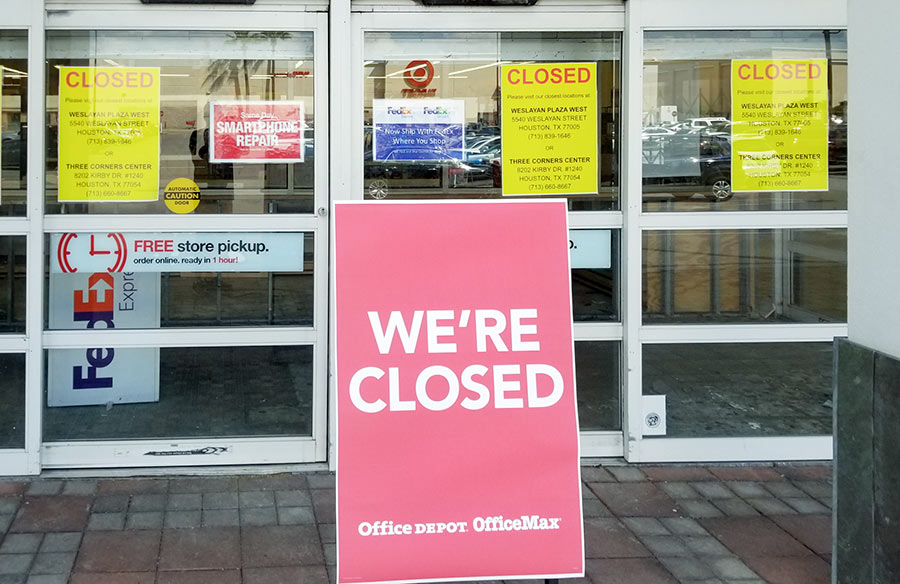
Pet Supermarket in Meyerland Plaza has reopened after taking on water after Hurricane Harvey, but it appears to be an exception among big-box stores lined in a row on the former mall site. Signs in front of Old Navy, OfficeMax, and Dressbarn declare the stores are closed — and direct customers to other locations, according to these photos and a report from a Swamplot reader. Here’s the scene in front of Old Navy, where notes in the window declare the store is closed “until further notice“:
LIFE IN ARBOR OAKS, AFTER MOST OF THE NEIGHBORS HAVE MOVED AWAY 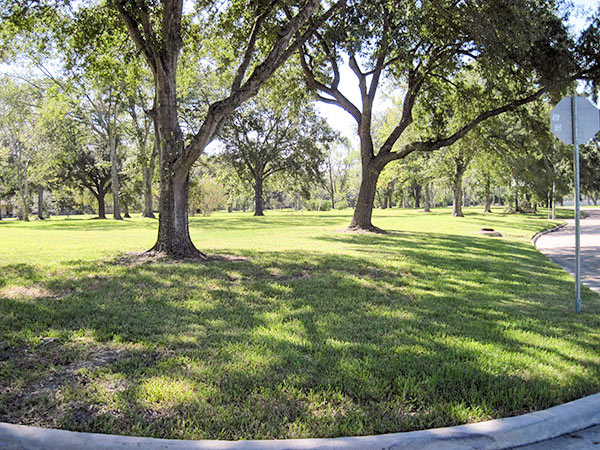 “It’s almost like living in the country,“HOA president and longtime Arbor Oaks resident Gwen Boucher tells Mike Morris. Her home has flooded 9 times in 42 years. A total of 207 properties in her neighborhood, near the intersection of Antoine and W. Little York, have been bought out and torn down since Tropical Storm Allison 16 years ago, at a cost of $36 million. Arbor Oaks is now down to just 13 homes, all of which flooded after Hurricane Harvey. “Though much of the neighborhood has returned to nature, it can feel unnatural. Yellow street signs and speed bumps caution cars that never come. Deep-green hostas still circle clumps of oak trees on vacant Gum Grove, exactly as their long-gone gardeners intended,” Morris writes. “Though some holdouts live within their original fences, others take a less literal approach. Two families have turned adjacent lots into volleyball courts. A handful of the houses sport basketball hoops, which is common enough, except that they are planted, in cement, on vacant lots across the street. Eugene Cox parks spare vehicles on the nearby grass, and is keeping two antique chassis on the street for a friend. Another neighbor, a truck driver, parks his cab on the street.” [Houston Chronicle ($)] Photo of park carved from former Arbor Oaks homesites: Near Northwest Management District
“It’s almost like living in the country,“HOA president and longtime Arbor Oaks resident Gwen Boucher tells Mike Morris. Her home has flooded 9 times in 42 years. A total of 207 properties in her neighborhood, near the intersection of Antoine and W. Little York, have been bought out and torn down since Tropical Storm Allison 16 years ago, at a cost of $36 million. Arbor Oaks is now down to just 13 homes, all of which flooded after Hurricane Harvey. “Though much of the neighborhood has returned to nature, it can feel unnatural. Yellow street signs and speed bumps caution cars that never come. Deep-green hostas still circle clumps of oak trees on vacant Gum Grove, exactly as their long-gone gardeners intended,” Morris writes. “Though some holdouts live within their original fences, others take a less literal approach. Two families have turned adjacent lots into volleyball courts. A handful of the houses sport basketball hoops, which is common enough, except that they are planted, in cement, on vacant lots across the street. Eugene Cox parks spare vehicles on the nearby grass, and is keeping two antique chassis on the street for a friend. Another neighbor, a truck driver, parks his cab on the street.” [Houston Chronicle ($)] Photo of park carved from former Arbor Oaks homesites: Near Northwest Management District

 Continuing arrangements set up for the Jewish New Year last week, families from the nation’s largest Conservative synagogue will assemble this evening and all day tomorrow for Yom Kippur services at the nation’s largest megachurch. Congregation Beth Yeshurun’s own facilities have been unusable since the synagogue on Beechnut St. — on the other side of the West Loop from Meyerland Plaza — took on as much as 4 ft. of water after Hurricane Harvey.
Continuing arrangements set up for the Jewish New Year last week, families from the nation’s largest Conservative synagogue will assemble this evening and all day tomorrow for Yom Kippur services at the nation’s largest megachurch. Congregation Beth Yeshurun’s own facilities have been unusable since the synagogue on Beechnut St. — on the other side of the West Loop from Meyerland Plaza — took on as much as 4 ft. of water after Hurricane Harvey.
The interfaith arrangement was brokered initially by Congressman John Culberson. After receiving extensive criticism for not opening its doors to flooding victims immediately following the first Harvey storms, Joel Osteen’s Lakewood Church eventually served as a shelter for as many as 450 evacuees. For Rosh Hashanah services last week, Lakewood arranged for a rotating slide show of 40 high-resolution photos depicting portions of Beth Yeshurun’s damaged sanctuaries to be displayed on the 24-ft.-by-12-ft. Jumbotron behind the stage of the 16,800-seat former Houston Rockets basketball arena in Greenway Plaza.
- Lakewood Church to host Beth Yeshurun for High Holy Days [Jewish Herald-Voice]
- Church transformed into synagogue for HHD [Jewish Herald-Voice]
- You Won’t Believe What Joel Osteen’s Lakewood Church Is Doing Now [Charisma News]
- Jewish congregation to worship at Lakewood Church for High Holidays [KHOU]
- Joel Osteen Opens His Church to Jewish Congregation for High Holidays After Synagogue Flooded by Harvey [Newsweek]
- Previously on Swamplot: Real Estate Works In Mysterious Ways: Houston Agrees To Sell Lakewood Church to Lakewood Church;Â Real Estate Lessons from Joel Osteen and Lakewood Church: It Is Better To Lease, Then To Buy; Lakewood Church Now Offers Drive-Thru Service; Your Best Deal Now: Will Lakewood Buy Its Own Church?
Photos of Rosh Hashanah services in Lakewood Church, in front of projected image of stained glass from a Beth Yeshurun sanctuary: Lakewood Church
COMMENT OF THE DAY RUNNER-UP: WHAT PEOPLE IN KATY DIDN’T KNOW ABOUT FLOODING  “We live in a house close to 99 in Katy. We have lived in this area for most of the last 10 years — in two different houses. I can tell you that each time we bought there was no mention, that I recall, of being inside of a potential bowl of water from the Barker reservoir. Nor were we mandated by mortgage companies to require flood insurance. We are MILES from the dam itself and never considered it. None of our neighbors did. Imagine our shock to wake up days after the storm to suddenly learn we were in a mandatory evacuation zone. Fortunately our house was far enough west, and high enough, that we didn’t take any damage. Many of our friends and neighbors weren’t so lucky. As we eventually learned, hardly anyone had flood insurance. We didn’t. It’s not that we weren’t in a 100 year flood plain, I don’t think we’re in the 500 year either. I have since purchased flood insurance (Fool me once, etc).
But I do think there is a case to be made against some agencies. What we’re learning now about lack of prudence between developers, ACOE, and Fort Bend County seems to be at least a little suspect. Some of these neighborhoods perhaps should have never been built. Additionally, the flood zone maps seem woefully out of date and do not take into account the further upstream development.
I get it — many people are going to point the finger at the homeowner and either their lack of planning or insurance. Fair point. But this event caught a lot of people off guard and I believe exposed a lot of problems that still need to be addressed.” [HaventFloodedYet, commenting on Suing the Army Corps for Reservoir Releases; A City App for Debris Removal; 30 Years of the GRB] Illustration: Lulu
“We live in a house close to 99 in Katy. We have lived in this area for most of the last 10 years — in two different houses. I can tell you that each time we bought there was no mention, that I recall, of being inside of a potential bowl of water from the Barker reservoir. Nor were we mandated by mortgage companies to require flood insurance. We are MILES from the dam itself and never considered it. None of our neighbors did. Imagine our shock to wake up days after the storm to suddenly learn we were in a mandatory evacuation zone. Fortunately our house was far enough west, and high enough, that we didn’t take any damage. Many of our friends and neighbors weren’t so lucky. As we eventually learned, hardly anyone had flood insurance. We didn’t. It’s not that we weren’t in a 100 year flood plain, I don’t think we’re in the 500 year either. I have since purchased flood insurance (Fool me once, etc).
But I do think there is a case to be made against some agencies. What we’re learning now about lack of prudence between developers, ACOE, and Fort Bend County seems to be at least a little suspect. Some of these neighborhoods perhaps should have never been built. Additionally, the flood zone maps seem woefully out of date and do not take into account the further upstream development.
I get it — many people are going to point the finger at the homeowner and either their lack of planning or insurance. Fair point. But this event caught a lot of people off guard and I believe exposed a lot of problems that still need to be addressed.” [HaventFloodedYet, commenting on Suing the Army Corps for Reservoir Releases; A City App for Debris Removal; 30 Years of the GRB] Illustration: Lulu
MAIN OFFICE TOWER AT BP ENERGY CORRIDOR CAMPUS WILL REMAIN EMPTY FOR MONTHS 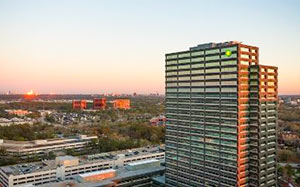 Major flooding after Hurricane Harvey knocked BP’s Westlake Campus out of commission for 3 weeks. Employees began moving back to their workspaces just south of I-10 between Eldridge and Hwy. 6 over the last few days, reports Collin Eaton — but only about a third of them: “BP executives still don’t know the full extent of the damage to its Westlake One tower, and they’re not sure exactly when it will reopen — although they expect that early next year. Floodwaters had risen to the top of the turnstiles in the lobby of the office building, filling the basement and bringing down the electrical systems. Contract workers piled thousands of sandbags around the building so they could start pumping out the rushing water.” [Houston Chronicle ($)] Photo of Westlake One, 501 Westlake Park Blvd.: Glassdoor
Major flooding after Hurricane Harvey knocked BP’s Westlake Campus out of commission for 3 weeks. Employees began moving back to their workspaces just south of I-10 between Eldridge and Hwy. 6 over the last few days, reports Collin Eaton — but only about a third of them: “BP executives still don’t know the full extent of the damage to its Westlake One tower, and they’re not sure exactly when it will reopen — although they expect that early next year. Floodwaters had risen to the top of the turnstiles in the lobby of the office building, filling the basement and bringing down the electrical systems. Contract workers piled thousands of sandbags around the building so they could start pumping out the rushing water.” [Houston Chronicle ($)] Photo of Westlake One, 501 Westlake Park Blvd.: Glassdoor
HOW TO NEGOTIATE THE MANY COMPLICATED EMOTIONS INVOLVED IN LISTING YOUR NOTTINGHAM FOREST HOME 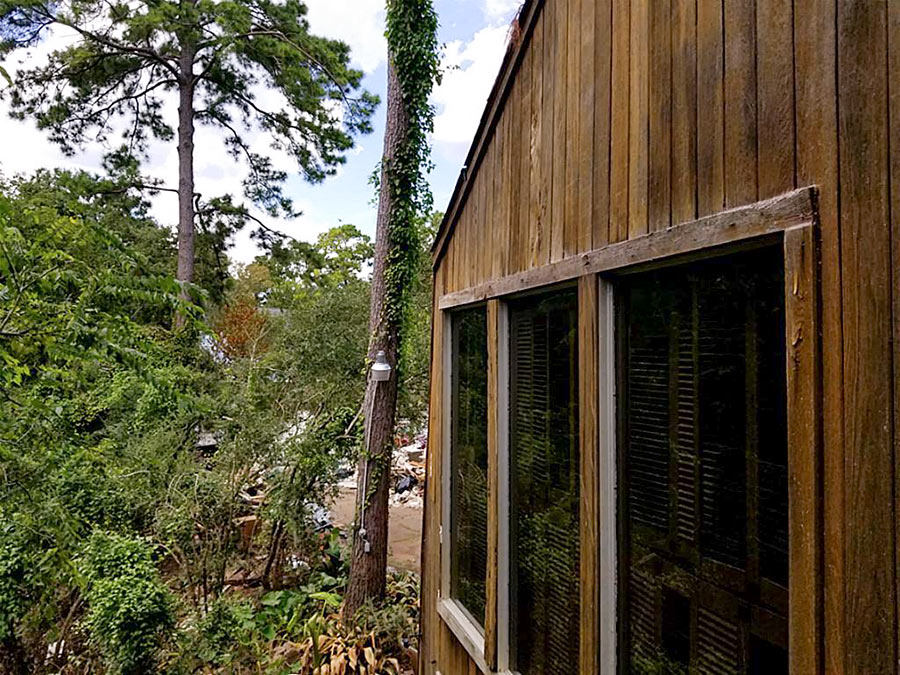 From the new listing for 302 Hickory Post Ln., posted yesterday: “Build your dream home here! This is a remodel or a tear down! Your choice. The Lot is amazing and is nestled at the end of the culdesac and backs up to the bayou. This was the only time the home ever flooded! Serious buyers only! Please don’t waste our time with low ball offers!” [HAR; previously on Swamplot]
From the new listing for 302 Hickory Post Ln., posted yesterday: “Build your dream home here! This is a remodel or a tear down! Your choice. The Lot is amazing and is nestled at the end of the culdesac and backs up to the bayou. This was the only time the home ever flooded! Serious buyers only! Please don’t waste our time with low ball offers!” [HAR; previously on Swamplot]

